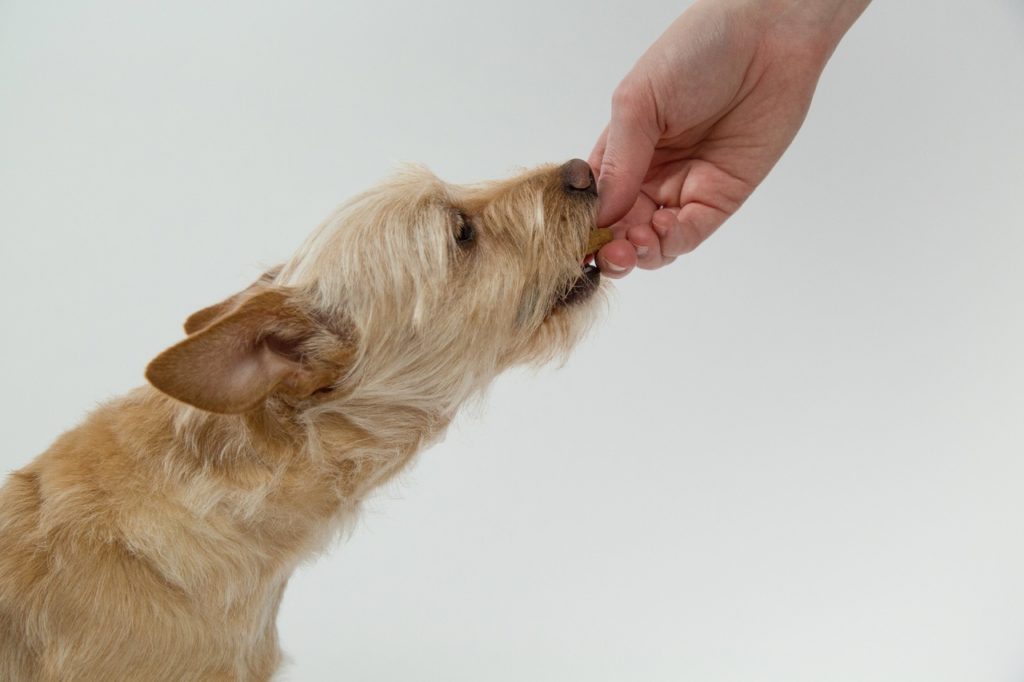With poison hemlock spreading rapidly and posing a significant threat to pets, the imperative nature of recognizing and addressing this toxic plant cannot be overstated. As unsuspecting as it may seem, the consequences of exposure can be dire for our beloved companions.
Understanding how to identify poison hemlock and the potential risks it carries for pets is paramount in safeguarding their well-being. Stay tuned as we explore the critical aspects of poison hemlock toxicity, from its prevalence to the symptoms it can induce in our furry friends.
Key Takeaways
- Poison hemlock is highly toxic to pets and can be found in various environments.
- Identification is crucial due to its resemblance to other plants like Queen Anne's lace.
- Symptoms of ingestion include gastrointestinal upset, weakness, and respiratory distress.
- Prevention involves removal, supervision of pets, and awareness of plant identification.
Origins and Distribution
Poison hemlock, originating from Europe and Asia in the 1800s, has established itself in fields, farms, and wild areas across the United States. This invasive plant is identified by umbrella-shaped clusters of small white flowers on tall stems and thrives in shaded, moist environments such as meadows and marshes.
Often confused with Queen Anne's lace, poison hemlock can be distinguished by its purple-splotched, hairless stems. Its toxic nature poses a significant threat to people, livestock, cats, and dogs if ingested, as all parts contain neurotoxins leading to severe health issues.
Recognizing and managing the spread of this toxic plant is crucial to safeguarding both human and animal health.
Physical Characteristics and Identification
With its distinctive physical features, identifying poison hemlock amidst other plants becomes essential for ensuring the safety of both humans and animals. This toxic plant can be recognized by the following characteristics:
- Purple-Spotted Stems: Poison hemlock stems have purple splotches and can grow up to 10 feet tall.
- Umbrella-Shaped Clusters of Small White Flowers: The plant features small white flowers arranged in umbrella-shaped clusters.
- Fern-Like Leaves: Poison hemlock leaves resemble those of a fern, aiding in its identification.
- Musty Odor: The plant emits a musty odor, further assisting in distinguishing it from other vegetation.
These features are crucial in differentiating poison hemlock from similar-looking plants and avoiding accidental ingestion by pets.
Toxicity and Risks to Pets

Pets are susceptible to the harmful effects of poison hemlock due to its toxic nature when ingested. Poison hemlock contains neurotoxins that can lead to severe issues in cats, dogs, and livestock. Livestock are particularly at risk due to larger ingestions.
In the last five years, the Pet Poison Helpline has received 19 calls related to poison hemlock exposure. Ingestion of this plant can result in symptoms such as excitement, weakness, depression, and respiratory paralysis in pets.
It is crucial for pet owners to be vigilant in preventing their animals from accessing poison hemlock and to seek immediate veterinary attention if ingestion is suspected to mitigate the risks associated with this toxic plant.
Symptoms in Pets
Given the toxic nature of poison hemlock and its potential harm to animals, recognizing the symptoms in pets is crucial for prompt identification and treatment.
Symptoms of poison hemlock poisoning in pets include:
- Gastrointestinal upset, such as vomiting and diarrhea.
- Weakness and lethargy.
- Depression and reluctance to move.
- Severe cases may present with coma-like signs, respiratory distress, or breathing difficulties.
If you suspect your pet has ingested poison hemlock and is displaying any of these symptoms, immediate veterinary attention is necessary. Treatment may involve inducing vomiting, administering activated charcoal, providing intravenous fluids, and controlling seizures to mitigate the effects of the toxins.
Severity of Poisoning

The severity of poison hemlock poisoning in animals correlates directly with the quantity ingested and the rapidity of symptom onset. Pets that consume larger amounts or show symptoms quickly are at higher risk of severe poisoning. Understanding the potential outcomes can help pet owners recognize the urgency of the situation and seek immediate veterinary care.
| Severity Level | Description |
|---|---|
| Mild | Gastrointestinal upset, mild weakness |
| Moderate | Vomiting, tremors, respiratory distress |
| Severe | Coma-like signs, respiratory paralysis, death |
Veterinary Treatment
Veterinary professionals administer treatment for poison hemlock toxicity in animals based on the severity of symptoms and the amount ingested. Treatment protocols may vary, but common approaches include induced vomiting, activated charcoal administration, intravenous fluid therapy, and the use of seizure control medications. For severe cases, additional interventions such as respiratory support and close monitoring for complications are essential. It is crucial for pet owners to seek immediate veterinary care upon suspicion of poison hemlock ingestion to increase the chances of a successful outcome for their animals.
- Induced vomiting helps remove any remaining plant material from the stomach.
- Activated charcoal binds to toxins in the gastrointestinal tract, preventing their absorption.
- Intravenous fluid therapy supports hydration and aids in toxin elimination.
- Seizure control medications help manage neurological symptoms in affected animals.
Hemlock Exposure Cases

Analysis of recent cases involving hemlock exposure in pets reveals concerning trends in symptoms and outcomes. The cases reported a range of symptoms from gastrointestinal upset and weakness to severe respiratory distress and even fatalities. Immediate veterinary intervention was crucial in managing these cases effectively. Here is a summary of the key findings:
| Symptom | Frequency |
|---|---|
| Vomiting | High |
| Weakness | Moderate |
| Respiratory Distress | High |
| Seizures | Low |
| Fatalities | Occasional |
Understanding these patterns can aid in early recognition and prompt treatment of hemlock toxicity in pets, potentially saving lives.
Hemlock Vs. Queen Anne's Lace
Comparing the visual characteristics of hemlock and Queen Anne's lace reveals subtle but crucial differences in their appearance. Poison hemlock can often be mistaken for Queen Anne's lace due to their similar umbrella-shaped clusters of small white flowers, but there are distinct features to differentiate the two plants.
- Identification: Hemlock has purple-splotched, hairless stems, while Queen Anne's lace has solid green, hairy stems.
- Height: Hemlock can grow up to 10 feet tall, towering over the typically shorter Queen Anne's lace.
- Leaves: Hemlock features fern-like leaves, whereas Queen Anne's lace has delicate, lacy foliage.
- Scent: Hemlock emits a musty odor, contrasting with the lack of distinct scent in Queen Anne's lace.
Environmental Preferences

Poison hemlock (Conium maculatum) thrives in shaded, moist environments such as meadows and marshes, making it crucial for pet owners to be aware of its environmental preferences to prevent accidental exposure to their animals. Understanding where this toxic plant grows can aid in avoiding potential risks to pets. Below is a table summarizing the environmental preferences of poison hemlock:
| Environmental Factor | Preference |
|---|---|
| Light Conditions | Shaded |
| Moisture Levels | High |
| Habitat | Meadows, Marshes |
Hemlock Removal Methods
When addressing the removal of poison hemlock from an area, it is essential to employ effective and thorough eradication methods to ensure the safety of pets and livestock.
- Manual Removal: Pull out the entire plant, including the root system, wearing gloves to avoid skin contact.
- Mowing and Cutting: Regularly mow or cut down hemlock plants before they bloom to prevent seed dispersal.
- Herbicide Application: Use herbicides specifically designed to target hemlock while following safety guidelines.
- Consultation: Seek guidance from agricultural agencies or professionals for the most suitable and safe removal techniques.
Implementing a combination of these methods can help control and eliminate poison hemlock infestations, reducing the risk of toxicity to pets and livestock.
Pet Safety Measures

Ensuring the safety of pets around poison hemlock involves proactive measures to prevent accidental ingestion and potential toxicity risks. Pet owners should meticulously inspect their surroundings for any presence of poison hemlock and promptly remove it from their property.
When walking pets, particularly in areas where poison hemlock may grow, it is essential to keep them on a leash to prevent them from ingesting the toxic plant. Additionally, educating oneself on plant identification can help pet owners avoid accidental exposure to poison hemlock.
Regular yard inspections for toxic plants and the consideration of planting pet-safe alternatives are crucial steps in safeguarding pets from potential harm. Seeking guidance from agricultural agencies or experts can provide effective methods for removing poison hemlock from the environment.
Recognizing Toxic Effects
The identification of toxic effects caused by ingestion of poison hemlock in pets necessitates prompt recognition and appropriate intervention measures.
- Prompt Recognition: Immediate observation of symptoms such as gastrointestinal upset, weakness, tremors, and respiratory distress is crucial.
- Consult Veterinary Help: Contact a vet urgently for professional guidance and treatment.
- Avoid Home Remedies: Refrain from administering home remedies without veterinary approval as they can exacerbate the situation.
- Keep Pet Calm: Ensure your pet remains calm and comfortable while awaiting veterinary assistance.
Hemlock Habitat Locations

Habitat locations favored by poison hemlock (Conium maculatum) encompass a variety of environments ranging from fields and pastures to roadsides and waste areas. This invasive plant thrives in disturbed areas, along riverbanks, in ditches, and near water sources. Poison hemlock can also be found in meadows, marshes, and along fence lines. Its ability to adapt to different soil types and light conditions allows it to spread rapidly, making it a common sight in agricultural fields and abandoned lots.
Due to its aggressive growth pattern, poison hemlock poses a significant risk to pets and livestock that may encounter it in these diverse habitats. Being aware of its preferred locations is crucial in preventing accidental exposure and poisoning incidents.
Agricultural Expert Consultation
In managing the risks associated with poison hemlock exposure to pets and livestock, seeking guidance from agricultural experts is paramount to developing effective prevention and removal strategies. Consulting with professionals knowledgeable about plant toxicity and removal techniques can significantly aid in safeguarding animals from potential harm.
Key Points for Agricultural Expert Consultation:
- Identification Assistance: Agricultural experts can help accurately identify poison hemlock and differentiate it from similar-looking plants, reducing the risk of misidentification.
- Removal Methods: Experts can recommend safe and efficient ways to eradicate poison hemlock from agricultural lands or residential areas without causing harm to other plant species.
- Preventive Measures: Agricultural specialists can provide guidance on preventive measures to minimize the likelihood of pet and livestock exposure to toxic plants.
- Local Regulations: They can also advise on compliance with local regulations regarding plant removal and disposal methods.
Importance of Plant Awareness

Enhancing awareness of plants and their potential toxicity is critical for safeguarding pets and livestock from harmful exposures. With the prevalence of toxic plants like poison hemlock in various environments, understanding their characteristics and dangers is essential.
Pet owners and farmers must be able to identify these plants accurately to prevent accidental ingestion by their animals. By being aware of the toxic effects and common locations of plants like poison hemlock, proactive measures can be taken to mitigate risks.
Educating oneself on plant identification, regularly inspecting properties for toxic species, and seeking professional advice for removal are effective ways to manage plant-related dangers. Ultimately, plant awareness plays a crucial role in ensuring the well-being and safety of pets and livestock.
Conclusion
In conclusion, understanding the characteristics and risks associated with poison hemlock is essential in protecting pets and livestock from potential poisoning.
With its increasing prevalence across various ecosystems in the United States, proactive measures in identification, prevention, and management are crucial.
By recognizing the distinct physical features of poison hemlock and being aware of the severe symptoms it can cause in pets, individuals can take steps to safeguard the well-being of their animals.




